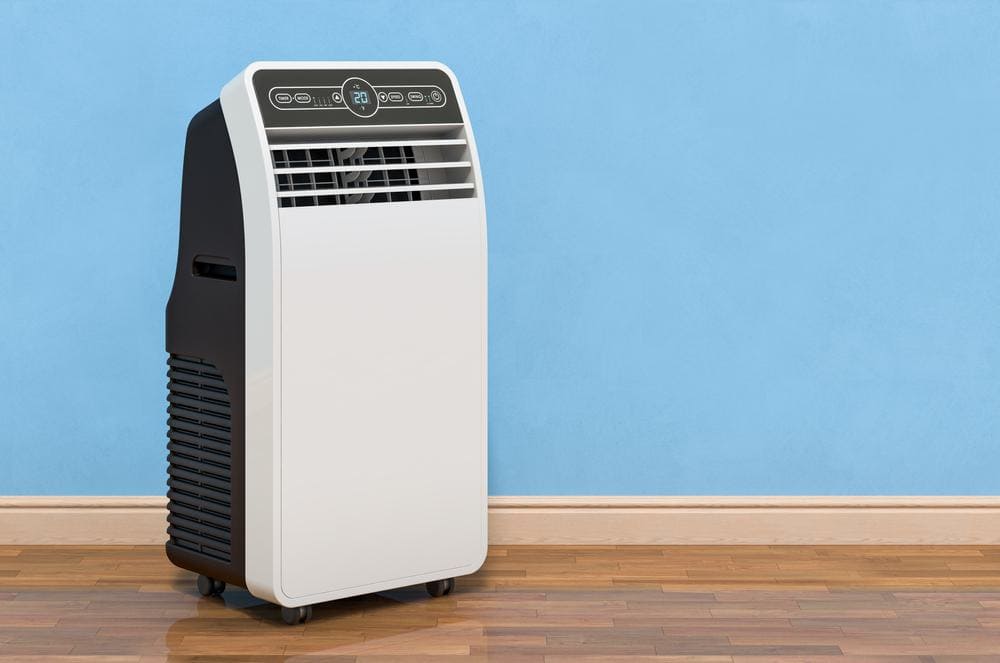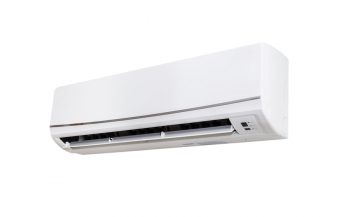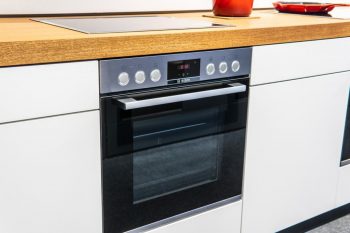
Venting a portable air conditioner (AC) is crucial for its optimal performance. While most people prefer to vent their ACs through traditional sash windows, this may not always be possible. In such cases, a sliding glass door can serve as an effective alternative. In this comprehensive guide, we’ll explore how to vent a portable AC through a sliding door, the potential pitfalls to avoid, and the benefits of this method.
Venting a portable AC through a sliding door can be achieved by purchasing a sliding door vent kit that includes a vent panel and a vent hose. Measure your door’s opening, cut the vent panel to fit, position the AC unit near the door, install the vent panel in the door track, and attach the exhaust hose from the AC unit to the panel. Secure the door with a bar or wood piece, plug in the AC unit, and ensure the hose is directed outside.
Why Vent Through a Sliding Door?
If you’re wondering why anyone would want to vent their portable AC through a sliding door, it’s often due to the lack of suitable windows. Venting through a sliding door can be an easy solution, especially when using a sliding door vent kit. These kits typically include a vent panel that fits into your door track and a vent hose that attaches to the panel.
Venting a portable AC through a sliding door has several benefits:
- Alternative to window venting: Sliding doors can be used for venting when traditional sash windows aren’t available or suitable.
- Easy installation: Sliding door vent kits come with all necessary components, making the installation process simple and straightforward.
- Maintains cooling efficiency: Venting the hot air outside prevents warm air accumulation in the room, enhancing the AC’s cooling efficiency.
- Security: An adjustable security bar or strong wood can be attached in the opening along its track to prevent push back from outside.
Step-by-Step Guide to Vent a Portable AC Through a Sliding Door
Here’s a step-by-step guide on how to vent a portable AC through a sliding door:
- Measure the sliding door opening: Before purchasing a sliding door vent kit, measure the height and width of your sliding door opening to ensure you buy the correct size.
- Purchase a vent kit: You can find these online or at a hardware store. The kit typically includes a Plexiglass insert or a dedicated sliding door AC hardware kit similar to a window kit.
- Prepare the vent kit: Cut the Plexiglass insert or vent panel to the appropriate size to fit your sliding door opening.
- Position the AC unit: Place the portable air conditioner on a flat surface near the sliding door, ensuring there is enough space around it for proper airflow.
- Install the venting kit in the sliding door: Open the sliding door slightly and place the vent panel in the door track. Align the panel with the door frame.
- Attach the exhaust hose: Connect the exhaust hose from the portable AC unit to the vent panel.
- Secure the sliding door: Use an adjustable security bar or a strong piece of wood in the door track to prevent the door from being pushed back from the outside.
- Plug in the AC unit: Connect the portable air conditioner to an electrical outlet and follow the manufacturer’s instructions for setting up and operating the unit.
Common Pitfalls to Avoid
When venting a portable AC through a sliding door, there are some common mistakes you should avoid:
- Kinked hoses: Ensure that the exhaust hose is not kinked or bent, as this can restrict airflow and reduce the efficiency of your portable AC.
- Leaking seals: Make sure the sliding door seal is properly installed and secure to prevent air leaks, which can reduce the cooling efficiency of your AC unit.
- Short hoses: Ensure that the hose is long enough to reach the outdoors without stretching or straining it.
- Improper installation: Follow instructions carefully when using a sliding door vent kit to ensure a proper fit and secure installation.
- Obstructed airflow: Avoid blocking the AC vents with furniture, curtains, or other objects, as this can limit air circulation and reduce the efficiency of your portable AC.
- Inadequate insulation: Ensure that the area around the sliding door is well-insulated to prevent heat from entering the room and reducing the efficiency of your portable AC.
- Venting into another room: Avoid venting your portable AC into another room in your home, as this can cause increased temperatures in that room and reduce the overall efficiency of your AC unit.
Safety Precautions
When setting up a portable AC for ventilation through a sliding door, remember to:
- Read the manual: Always consult the user manual for your specific portable AC unit to ensure proper installation and operation.
- Seal gaps and openings: Use duct tape or a sealant kit to cover any gaps or openings around the vent panel to prevent air leaks.
- Ensure proper ventilation: Make sure the vent hose is directed outside to expel warm air efficiently.
Maintenance and Cleaning
Regular maintenance and cleaning of your portable AC can ensure optimal performance and longevity. This includes keeping the exhaust hose straight, cleaning the air filter regularly, inspecting the vent kit, cleaning the exterior, checking the hose connection, maintaining proper clearance, and scheduling regular maintenance.
Recommended Models for Sliding Door Venting
Some recommended models for sliding door venting include the LP0621WSR, LP1419IVSM, ZHP14DB, and TAD-T33. However, slight modifications to the mounting system may be necessary to achieve the desired fit for sliding door and window applications.
In conclusion, venting a portable AC through a sliding door is an effective alternative when traditional window venting is not an option. With the right equipment and proper installation, you can enjoy the comfort of a cool room without compromising the efficiency of your portable AC.
Frequently Asked Questions
Can I vent a portable AC through a sliding door without a vent kit?
Although technically possible, venting a portable AC through a sliding door without a vent kit is not recommended. A vent kit ensures a secure and airtight seal, which is necessary for the efficient operation of the AC unit. Without it, you risk air leaks, decreased efficiency, and potential damage to your door.
Can I use any sliding door vent kit with my portable AC?
Not all vent kits are universal. Make sure to check the specifications of your portable AC and the vent kit to ensure compatibility. The diameter of the exhaust hose and the dimensions of the vent panel should match those of your AC unit.
What happens if I don’t vent my portable AC to the outside?
If a portable AC is not vented to the outside, it will not work efficiently. The unit will struggle to cool the room as it will be recycling the hot air it is supposed to expel. This can lead to increased energy consumption and decreased cooling efficiency.
How often should I clean my portable AC unit when venting through a sliding door?
Generally, you should clean the air filter of your portable AC unit every two weeks, but this can vary based on use and air quality. Check your user manual for specific instructions. Regular cleaning ensures optimal performance and extends the lifespan of your unit.
Can I extend the exhaust hose of my portable AC to reach my sliding door?
Extending the exhaust hose of your portable AC is not recommended. Long or extended hoses can cause the AC unit to work harder, leading to decreased efficiency and potential damage to the unit. If the hose is not long enough, consider moving the unit closer to the sliding door or purchasing a longer hose that is compatible with your unit.












